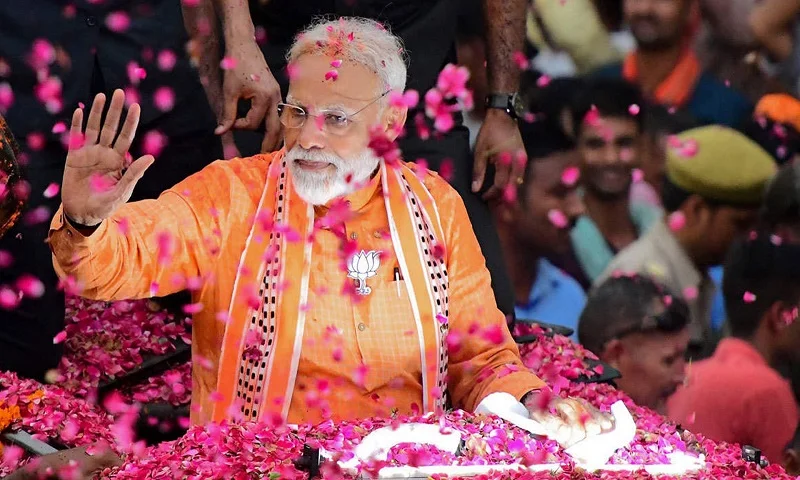India Election: Voting continues for six long weeks
Share on:

India will hold the world's largest general elections, with almost a billion people eligible to vote for 543 members of the lower house of parliament on Friday (April 19).
Opinion surveys predict an easy win for Prime Minister Narendra Modi's Bharatiya Janata Party when the results become available on June 4.
However, it will be more than six weeks before the first vote, cast on April 19, is counted.
The reasons why the process is so long are stated below.
Number of Days
The election cycle sprawls over 44 days, long even by India's standards, as the 2019 vote lasted 39 days.
This year's elections will be India's second longest after the first exercise following independence in 1947 from colonial ruler Britain, which ran for four months from Oct 25, 1951 to Feb 21, 1952.
There are seven voting days this year, with Friday's first phase seeing people cast ballots for 102 constituencies nationwide. The last polling date is June 1, covering 57 seats.
All votes will be counted together on June 4.
Voter Numbers
The size of the country and its electorate is the chief reason why the general election takes so long.
India's eligible voters, at 968.6 million, number more than twice the European Union's population of 448 million. The figure has grown 8% since the 2019 elections.
With an estimated population of more than 1.4 billion, India overtook China last year as the world's most populous country.
Geographical Spread
Some of India's 28 states and eight federally governed territories complete voting in just one phase, but in larger states, some constituencies vote on different dates.
For example, the northern state of Uttar Pradesh, with a population of more than 230 million and 80 members of parliament, more than any other state, will vote in parts in every phase.
The Election Commission manages this massive exercise by carving out smaller voting boroughs, limiting each polling station to no more than 1,500 registered voters.
That requires the watchdog to set up 1.048 million polling stations this year, in locations such as government buildings and schools that are the closest to the majority of voters.
They are sited in terrain ranging from icy Himalayan heights in the north to dense central Indian jungles and remote deserts in the western state of Rajasthan.
Security Arrangements
Incidents of violence and vote-rigging have marred India's election history, but there are drastically fewer instances today.
Nevertheless, to ensure the elections are free, fair and held without fear, more than 300,000 federal security personnel back up the police forces controlled by state governments.
The intervals between voting allows these personnel time to move around the country, usually by rail.
They guard election officials taking voting machines to polling stations and then keep the devices secure until counting day to maintain the integrity of the elections.
Source: Reuters

